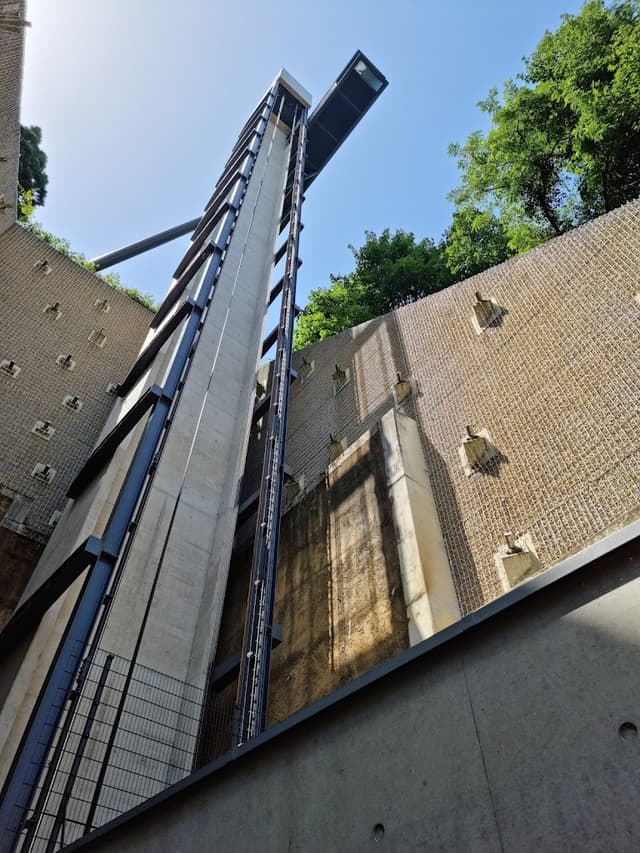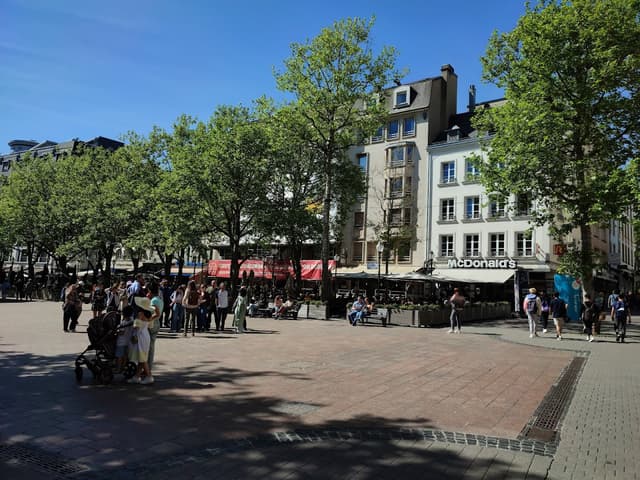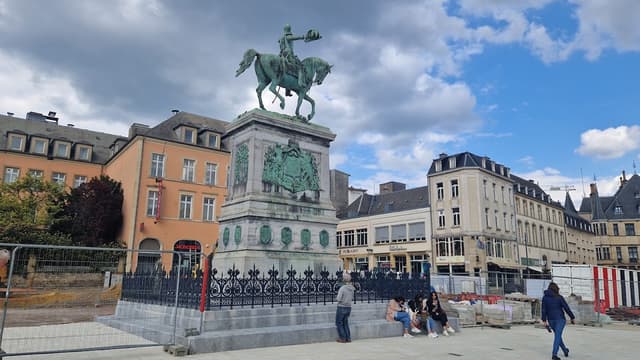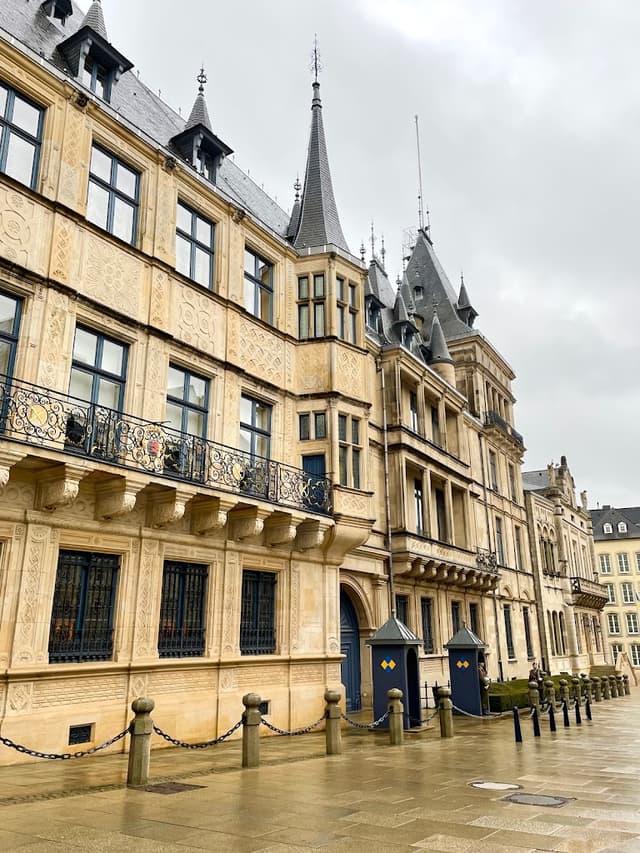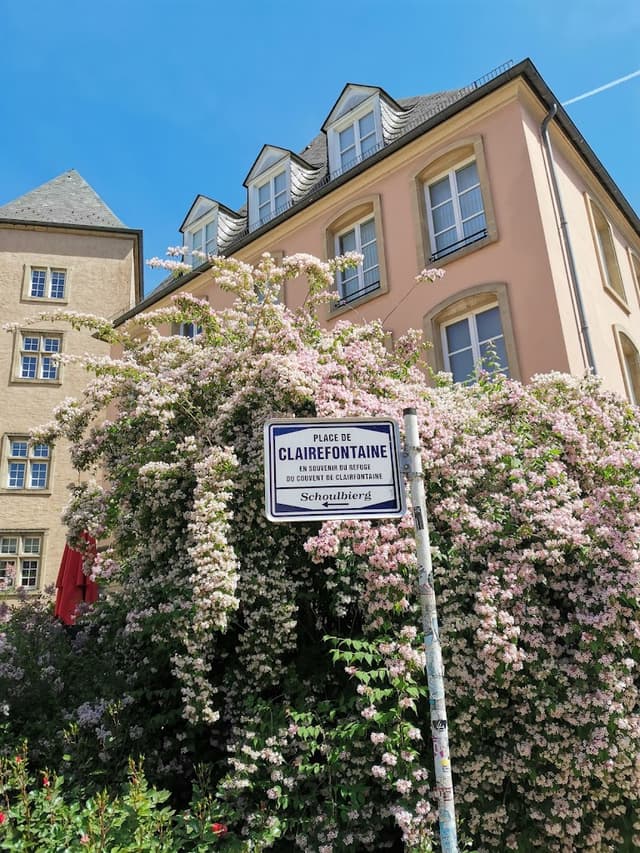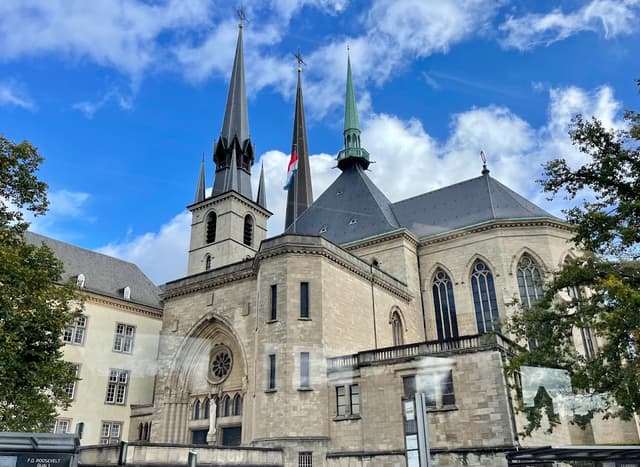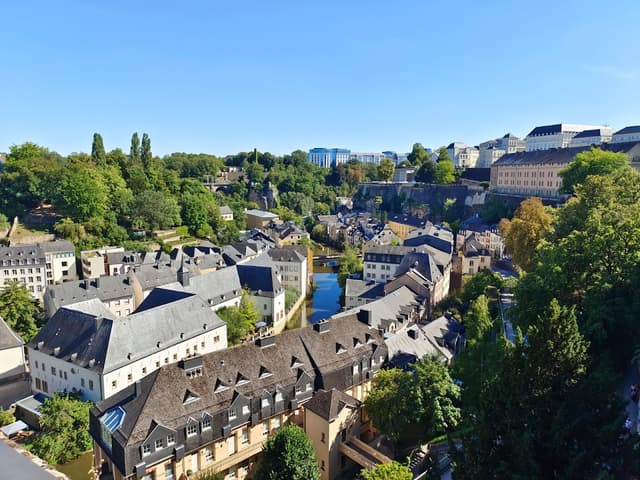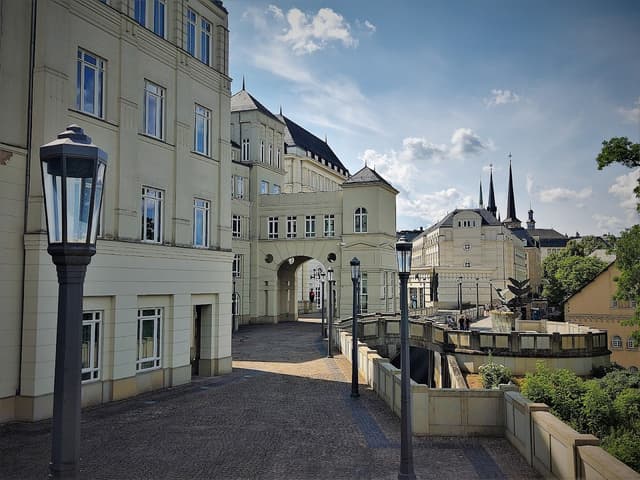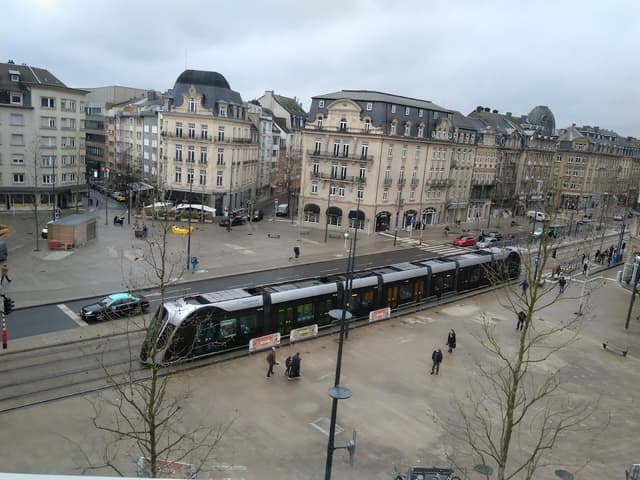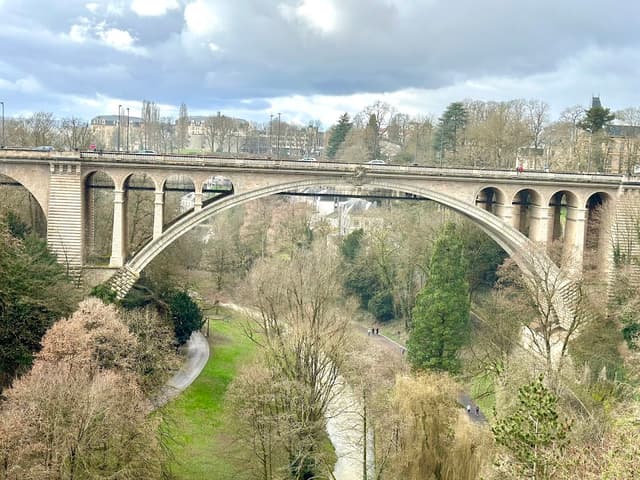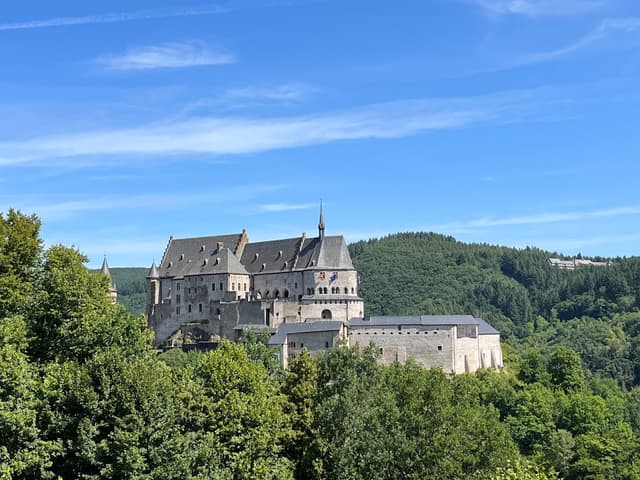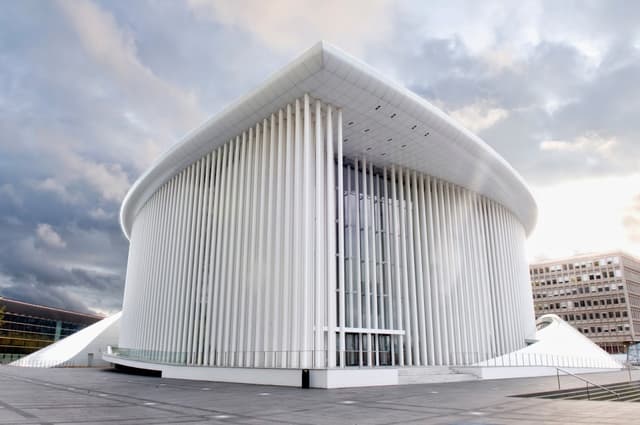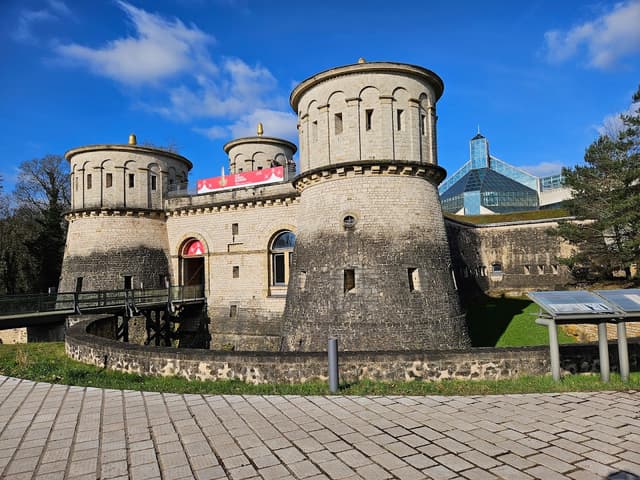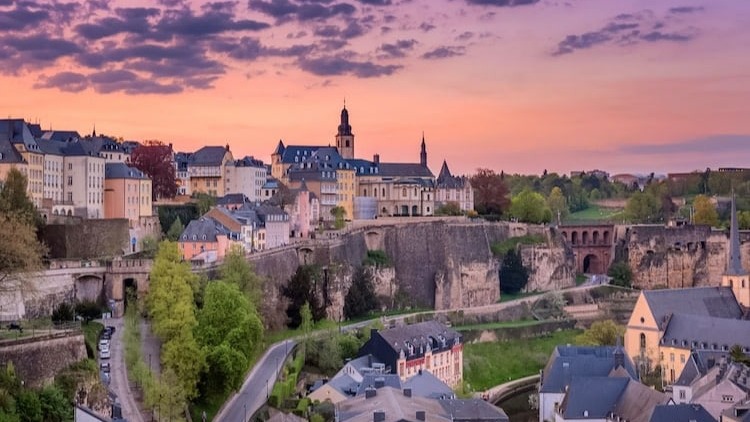Day 1
One day to discover the magic of the capital. The smallest city I have visited to date and the most surprising.
Public Transport: All Free
Panoramic Elevator of the Pfaffenthal
@mariagarcia2
The Pfaffenthal Panoramic Elevator is a public elevator in Luxembourg City that connects the city districts of Ville Haute, the city's historic center, with Pfaffenthal, in the Alzette valley below. It offers its passengers panoramic views over the Alzette river valley.

Details
Rue Philippe II
@mariagarcia2
Walk 750 meters. It is the street where the city's luxury stores are located.

Details
Place d'Armes
@mariagarcia2
Walk 120 meters. An integral part of the pedestrian zone, surrounded by numerous street cafes and restaurants, it has become a meeting place for young and old, locals and visitors. Also known as the “City Hall”, it was aligned by Sebastian van Noyen of Utrecht and completed by governor Jean Charles de Landas in 1671. Louis XIV's French troops paved the square, planted lime trees and used it for parades. Today it hosts the main Luxembourg Christmas Market, the Lëtzebuerger Chrëschtmaart.

Details
William Square
@mariagarcia2
Caminhar 200 metros. Está no coração do bairro histórico de Ville Haute e é coloquialmente conhecida como Knuedler, da palavra luxemburguesa para ' nó (referindo-se ao nó do cinto usado pelos frades franciscanos). A praça era originalmente o local de um mosteiro franciscano que em 1797, durante as Guerras Revolucionárias Francesas, foi desapropriado pelos soldados franceses. Em 1804, Napoleão presenteou a cidade com a Place Guillaume II. Em 1829, começou a construção da nova Câmara Municipal e nesse mesmo ano foi concluída a desconstrução do antigo mosteiro. A Câmara Municipal foi concluída em 1838 e foi utilizada pela primeira vez presidida pelo antigo Presidente François Scheffer. Devido à Revolução Belga, a inauguração oficial não pôde ser realizada na altura sendo posteriormente a 15 de julho de 1844 pelo Grão-Duque Guilherme II, assim como a estátua à sua imagem

Details
Chocolate House Nathalie Bonn
@mariagarcia2
Walk 50 meters. A break to taste the best creations with Belgian and Swiss chocolate.

Details
Palais Grand-Ducal
@mariagarcia2
Walk 2 meters. Built as a Town Hall in a Spanish Renaissance style, it has always been subject to renovations and expansions in order to maintain comfort and usability. In 1817, the palace became the residence of the so-called Governor, at the time, Prince Henry of the Netherlands. During the German occupation in World War II, the Grand Ducal Palace was used as an inn and concert hall by the Nazis. During this period, many of the palace's furniture and works of art were destroyed. With the end of the war in 1945 and the return of the Grand Duchess, the palace once again became the seat of the court. It has been the Grand Duke's official residence since 1890. On Christmas Eve, the Grand Duke usually reads a message from the Yellow Room.

Details
Chamber of Deputies of Luxembourg
@mariagarcia2
Walk 60 meters. The Chamber of Deputies of the Grand Duchy of Luxembourg is the seat of legislative power in the unicameral format and is made up of 60 deputies elected by proportional representation using the d'Hondt method in 4 electoral districts to serve 5-year terms.

Details
Place de Clairefontaine
@mariagarcia2
Walk 100 meters. In the late 1980s, Place de Clairefontaine, located close to the cathedral and government district, was rebuilt during extensive renovation and reconstruction work. The name of the square comes from a place of refuge that belonged to the Abbey of Clairefontaine, located on the border between Belgium and Luxembourg. In 1933, this shelter was demolished. A monument in honor of sovereign Charlotte (1896-1985), the work of Parisian sculptor Jean Cardot, was erected on the Place de Clairefontaine in April 1990.

Details
Cathédrale Notre-Dame
@mariagarcia2
Walk 250 meters. It was a Jesuit cathedral, and its base dates back to 1613. The church is a great example of ancient Gothic architecture; however, it also has many elements and adornments of Renaissance architecture. At the end of the 18th century, it received the miraculous image of Maria Consolatrix Afflictorum, the patron saint of the city and the nation. It was consecrated as the Church of Our Lady and, around 1870, it was elevated to Notre-Dame Cathedral by Pope Pius IX. From 1935 to 1938, the cathedral underwent expansion.

Details
Chemin de la Corniche
@mariagarcia2
Walk 50 meters. The Chemin de la Corniche is the elevated route that surrounds the cliffs, from where you can see the medieval structures and the entire lower town, the river and the bridges. The exceptional view of the Alzette valley gives it the name “the most beautiful balcony in Europe”. Following the Alzette valley, the path goes from Rock of Bock to the lower part of the Citadel of Espírito Santo known as “rondelles”.

Details
Cité judiciaire
@mariagarcia2
In 1992, the Government Council approved the Minister's proposal to entrust the project to build a new Judiciary City on the Plateau du Saint-Esprit to Luxembourg architects Rob and Léon Krier. The first stone of the Judiciary City was laid on October 7, 2003. In 2008 the work was completed and the Justice services were able to move to the new premises in July. On October 6, 2008, the Judiciary City was officially inaugurated.

Details
Place de Paris
@mariagarcia2
Walk 750 meters. Place de Paris was transformed into a pedestrian zone in 1986. The restaurants offer beautiful terraces in summer and there is a small fruit and vegetable market every Thursday. One more stop at the Christmas markets, in this case the Mercado de São Nicolau where it is possible to visit the Gruta de São Nicolau to deliver the gift list to Santa Claus, stalls with mulled wine and other Christmas drinks with or without alcohol, as well as a variety of street foods.

Details
Place des Martyrs
@mariagarcia2
Walk 250 meters. It is a garden square in the city of Luxembourg also known as the Rose Garden, due to the red roses that dominate the garden's floriculture. It was built in the 1920s, after the German occupation in the First World War. Three radial paths run through the square, meeting at a point in front of Arcelor's headquarters, where there is a work by British sculptor Henry Moore, which depicts a mother and son.

Details
Pont Adolphe
@mariagarcia2
Walk 1 km. Also called Ponte Nova, it was built between 1900 and 1903 during the government of Grand Duke Adolphe. This event was followed with great interest from abroad, as the bridge had the largest stone arch in the world at that time. The large double arch stretches more than 85 meters across the Pétrusse valley, at a height of 42 meters and with a total length of 153 meters.

Details
Place de la Constitution
@mariagarcia2
Walk 650 meters. Place de la Constitution was built on the former bastion of Beck (1644,1685). This square also houses the memorial monument "Gëlle Fra" which was erected in 1923 in memory of the Luxembourg soldiers who died during the First World War, today it is a symbol of the freedom and resistance of the Luxembourg people. From here we have a magnificent view over the Pétrusse valley and the Adolphe bridge. Wantermaart is the winter market located in this square. The main tourist attractions are the 32-meter Ferris wheel, a 13-meter Christmas tree, trampolines and other games for children.

Details
Parc Kinnekswiss
Walk 1km. It is the largest green park in the city. The fourth and final Christmas market in the city is Wanterpark, where the ice rink is usually located. There is also a gourmet food fair and many activities for families, including music and games for children, a concert for young people and karaoke.
Take the opportunity to have dinner, drink a good mulled wine, dance or go roller skating.
Day 2
A trip to the fairytale castle and the new part of town.
Take bus 181 from Gare de Ettelbruck and get off at Vianden, Bréck. It takes 1h30 to complete the journey. Walk 400 meters to Chairlift Vianden and take the cable car up to the Castle (€6.50) – the cable car may be closed, check in advance.
Vianden
@mariagarcia2
It is known for its castle and location in the Our valley. Inserted in the splendid landscape of Éislek, Vianden has had a tourist tradition for over a hundred years. Just like the famous French poet Victor Hugo, thousands of visitors are enchanted every year by the narrow, paved streets, the Gothic churches, the fortified walls and towers of the small medieval village, dominated by the magnificent restored castle. Meanwhile, well-maintained trails, with spectacular panoramic views, invite passionate walkers to discover the fauna and flora of the extensive forests and narrow valleys.

Details
Vianden Castle
@mariagarcia2
The castle was built between the 11th and 14th centuries, becoming the property of the Counts of Vianden. It was expanded until the 18th century, but with the departure of the counts of Luxembourg to the Netherlands, combined with the effects of a fire and earthquake, it ended up deteriorating. In 1820 King William I of the Netherlands (and also Grand Duke of Luxembourg) sold it to a local merchant, who, in turn, little by little sold the castle's masonry and contents, reducing it to ruins. There have been many restoration attempts, but they have been hampered by ownership issues. In 1977, through a generous donation from Grand Duke Jean, the former feudal residence became part of the Luxembourg State, which restored it to its former glory.

Details
After a very fantasy morning. Return to the city center and if you have time, take a walk around the most recent area of the city where the headquarters of the first Hemicycle built for the European Parliament are located.
Philharmonie Luxembourg
@mariagarcia2
Also known as the Grand Duchess Joséphine-Charlotte Concert Hall, it was opened in 2005. In 1995, Luxembourg was named European Capital of Culture and that year, Parliament took the decision to build a concert hall. In 1997, Christian de Portzamparc's project was selected at the end of the international architectural competition launched by the Public Buildings Administration. Construction work on the new concert hall was carried out between spring 2002 and summer 2005. 823 white steel facade columns line the Luxembourg Philharmonic. Designed using the “shoebox” concept, the Grand Auditorium has a capacity for 1,500 listeners.

Details
Parlement Européen
@mariagarcia2
Walk 200 meters. Home to the first Hemicycle built for the European Parliament, Luxembourg today hosts a large part of the fundamental administrative machinery that guarantees the functioning of the institution. Site visits are carried out by staff from the European Parliament Liaison Office in Luxembourg and last approximately one hour. They include a visit to the original Hemicycle and a presentation on the European Parliament and European institutions.

Details
Mudam Museum of Modern Art
@mariagarcia2
Walk 100 meters. The collection's holdings consist of more than 800 works of art in all media, by artists from Luxembourg and around the world. The first acquisitions for the museum date back to the 1990s, along with the creation of the Museum of Modern Art of the Grand Duke Jean Foundation in 1998 and the inauguration of the Museum in 2006. One of the few exceptions to this historic space is the set of furniture of the Paimio Sanatorium, designed between 1930 and 1933 by architect Alvar Aalto, and acquired in 2000.

Details
Fort Thüngen
@mariagarcia2
Walk 230 meters. Fort Thüngen is a military building and is part of the Luxembourg City fortifications. It was built in 1732 (and expanded in 1836 and reinforced in 1860).

Details
If your trip has more days, you can always take the opportunity to visit MUDAM or take advantage of the fact that public transport is free throughout the country and explore other cities.
* * *
